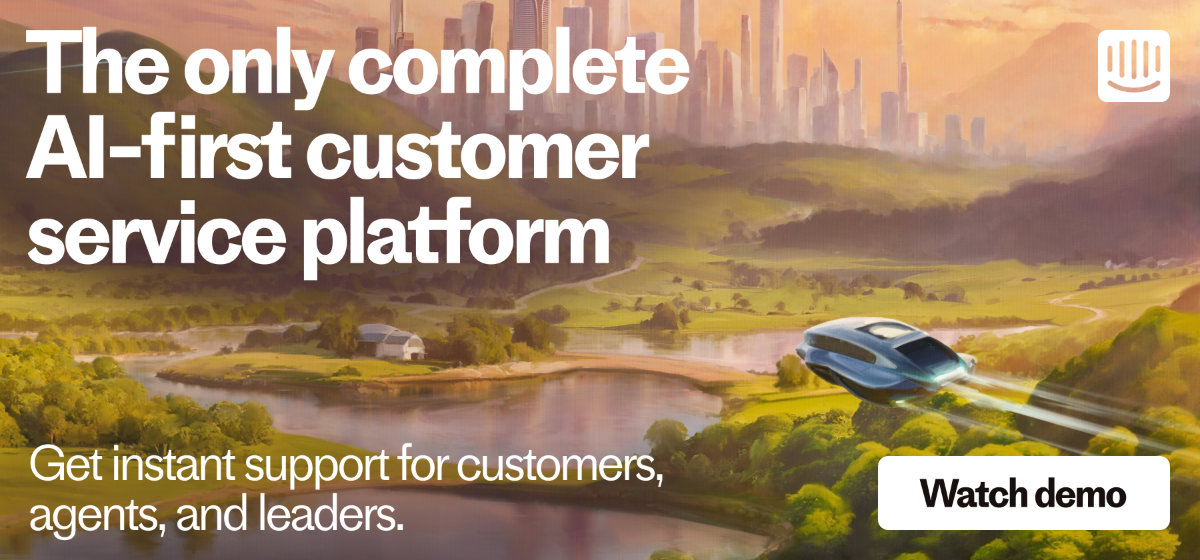
The art of the customer follow-up and delightful customer service
Main illustration: Lizzie Oh
Part of the ritual of eating a meal in a good restaurant is the waiter asking if you’re enjoying your food and if there is anything else they can get for you.
Now, you might not think much about that particular restaurant practice – after all, it’s just a simple customer follow-up question shortly after your food has arrived.
However, there are a few lessons in this simple example of customer service that are valuable for anyone who works in customer support. How do customers feel about the service they’re paying for? Does our service contribute to a sense of customer delight?
Importance of following up in customer service – asking is what matters
Usually, we can reply that everything is delicious and quickly forget the waiter even checked in with us. Sometimes there will be an inevitable issue – you’re missing some cutlery or condiments, or the food isn’t quite what you ordered – but above all, it is the very asking of the question that shows they care about your experience.
“You’re paying for a service, despite not feeling like you’re getting much of a service at all”
Contrast that sense of care with those occasions when you can’t catch the eye of a waiter no matter how hard you try. Or worse still, you have to ask the waiter where your food is and why it’s taking so long. Those situations are infuriating – you’re paying for a service, despite not feeling like you’re getting much of a service at all.
There are a few elements of this scenario that translates to customer support. A proactive support model, where you follow up with your customers consistently and help pre-emptively solve their problems, signals that you care about your customers and are dedicated to ensuring their continued success. It is this sort of consistent follow-up that will help ensure customers return to use your product or service again and happily recommend it to others. And when you take upselling and customer LTV into account, following up is actually a critical part of the sales process as well.
The art of the consistent customer follow-up
Ensuring your follow-ups are consistent and effective, however, is as much an art as a science, and it involves overcoming the inherent challenges of customer support, which can be relentless (consistent inbound volume, meeting SLAs, having a constant pulse on latest product releases). Agents can sometimes feel the need to just get through it and move on.
“You need to make sure the customer is happy with the resolution, so consistent, thoughtful follow-ups are key”
Support isn’t just about resolving a customer’s first question and moving on, however. You need to make sure the customer is happy with the resolution, so consistent, thoughtful follow-ups are key. They are seemingly simple, but they have a profound impact on the customer experience and people’s sense of being respected and cared for. This is something that small business owners often understand, but that larger companies can lose track of.
One of the key elements of the follow-up is the timing – after all, waiters know to ask how you’re doing shortly after the food has arrived, long enough for you to gauge if there are any problems but not so long that any issues can’t be corrected without ruining your meal.
How to follow up with a customer
Below, we share six examples of how you can follow up with a new customer after a sale. Regardless of your relationship with your client one of the best ways to follow up with them is through a modern business messenger. You’ll be able to proactively send targeted messages to help customers at the precise moments they need it, seamlessly send relevant help content, and even hop on a call for more complex conversations.
1. Say thank you
This is the most common type of follow-up message for a reason: it lets you express appreciation for the customer’s purchase and establish consistent contact into the future. For example, for conversations with VIP customers, you can include a phone number or email address where they can reach you if they have questions or run into stumbling blocks.
2. Help them get started with your product or service
Just as a maître d’ can set the tone for your whole experience at a high-end restaurant, a well-crafted welcome message or onboarding product tour sets the tone for your product or service. These types of messages should focus on things that will actually help the recipient get value from your product from day one. Things like:
- The most impactful next steps for them to take, e.g. send a message or add five teammates.
- The three most common questions customers have on the first day. Address them right upfront so they don’t have to hunt around for the answers.
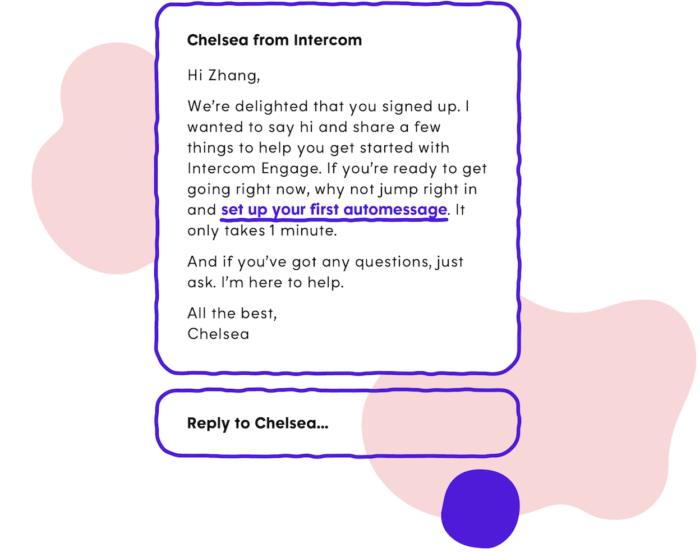
3. Inform them of new features
Proactive support helps customers get the most out of your product or service. Sending periodic messages updating them on new features is a great way to do this – especially if you’ve just released a feature they’ve requested before.
4. Ask if there’s any way you can help
If you see that a customer isn’t engaging or using a particularly powerful feature in your product, it might be time to send a follow-up message offering to help. For example, if you have a finance app, you can send a message to customers who haven’t created their first invoice yet and share some best practice tips. This will not only show you’re engaged, it’s also a great opportunity to get some customer feedback on the product.
5. Upsell
If you think there’s a product, service, or feature that the customer might find useful, then your sales team should let them know about it and try to upsell! You don’t want to bother your customers too much, so only do this if you’re confident that they’ll be interested.
6. Send them articles that might be helpful
Your knowledge base is full of useful information on how to get the most out of your product. If the customer has expressed concern or interest in using some part of your product, send them articles or information that will help them use it. You can also automatically trigger messages to send to customers at the exact moment they’ll need help while you’re using your product or browsing your website.
How we follow up with customers at Intercom
With proactive automation
At Intercom, our Support and Product Education teams work hand-in-hand to deliver automated proactive messages to our customers at critical moments throughout their customer journey. For example, after a customer signs up on day one, rather than leaving them to fend for themselves, we send them a relevant onboarding product tour. The tour gives them a warm welcome and offers to show them around and introduce them to the most important few features that will get them up and running.
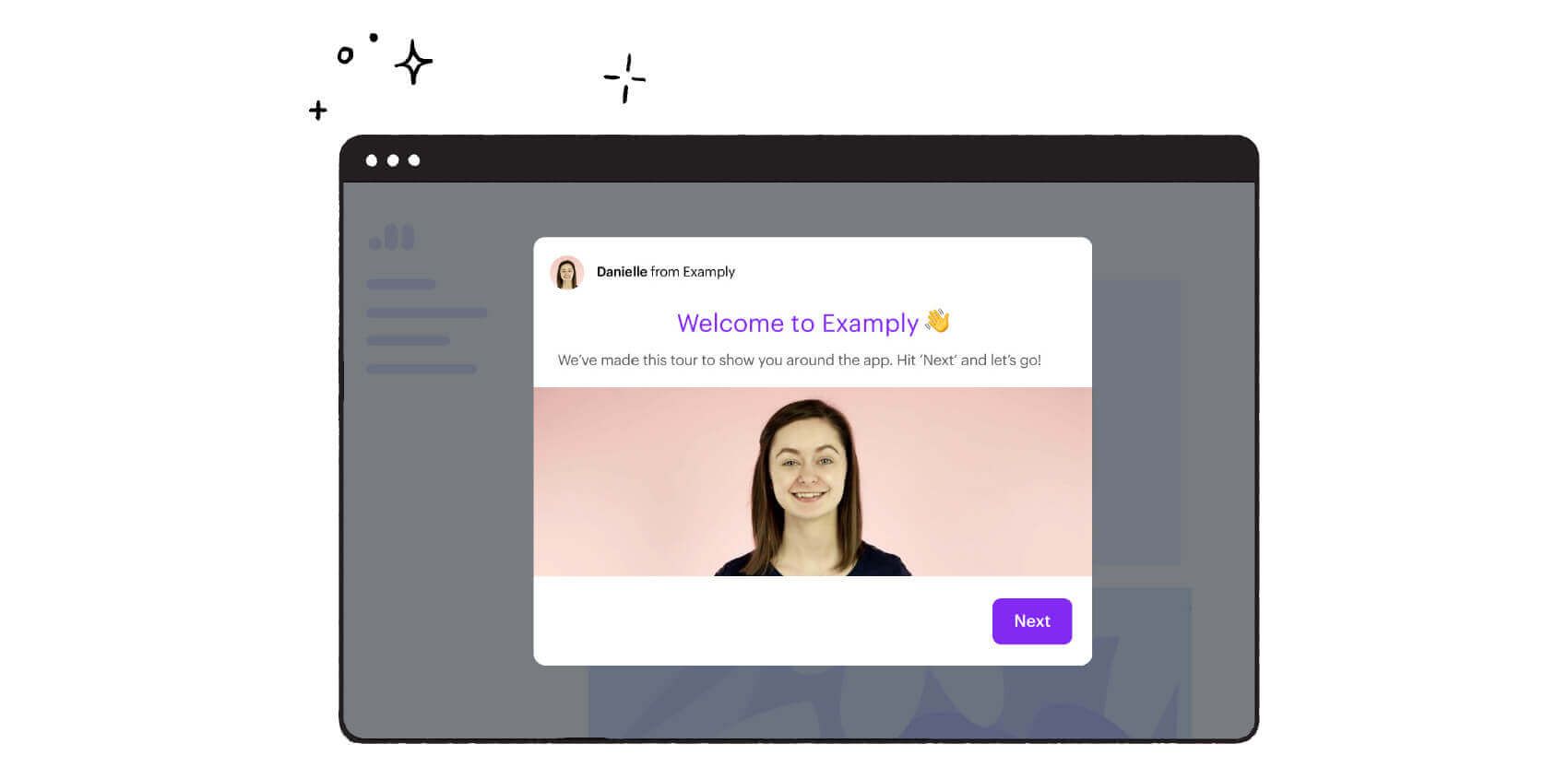
Hitting the snooze button
For more manual conversations, like those with VIP customers, we use a feature called snooze to help us follow up with specific customers and check if they’re happy with their resolution. You can set the snooze feature to automatically remind you to follow up on an important conversation a day, week, or month from now. Or you can choose whatever custom date works best. The conversation then gets shelved into a designated snoozed folder and reopens at the perfect follow-up moment.
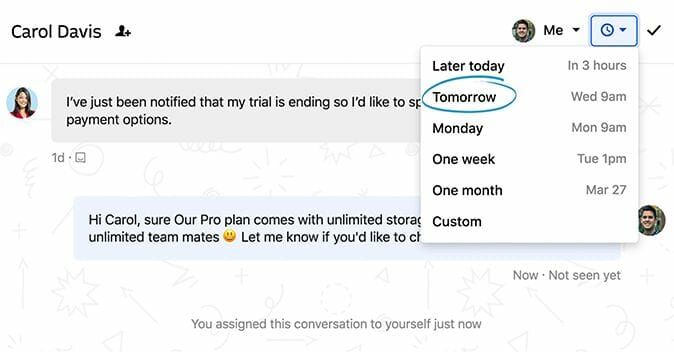
Here are some valuable tips on how to check in with customers:
- Be purposeful. Customers appreciate when you’ve put in the extra effort to ensure their issue is resolved. But it’s crucial that your follow-up message with the customer should always be meaningful for them – don’t just “check in” on your customer. A generic one liner with no real goal can cause noise and interrupt your customer’s day. Give it a purpose, whether that’s updating them on a product update or a resolved bug, and keep it personal.
- Be personal. While it’s good to use a saved reply to create a “follow-up snippet,” try to personalize the query where applicable.
- Be timely. I find mornings can be overwhelming – catching up on emails, Slack, updates, retros, scrum meetings … never mind grabbing some coffee and breakfast. The last thing I need is an overflowing Intercom Inbox all requiring follow-ups, so I schedule them to reopen at a time I know I’ll be able to pay them attention. Most days that’s in the afternoon.
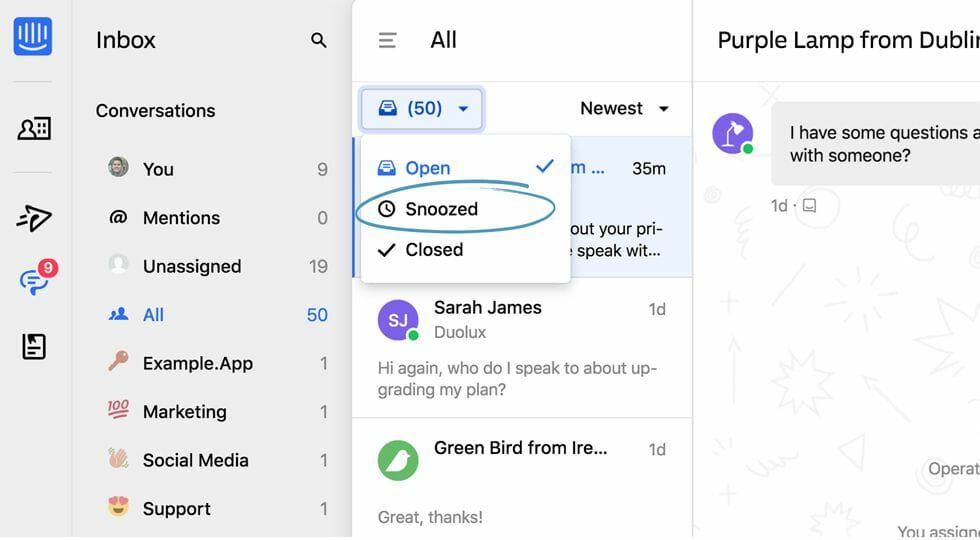
A proactive follow-up approach is key to customer engagement
The sense of being cared for, similar to how you feel after a fine meal in a friendly restaurant, is what you should aim to provide with your support. A proactive follow-up approach helps keep your customer interactions more personal, authentic, and helpful – even after the initial sale is made.
“Just like with a welcoming restaurant, you’ll retain more customers and keep them coming back for more”
With proactive support, you can onboard and educate your customers and empower them to achieve continued success with your product or service. Just like with a warm, welcoming restaurant, you’ll retain more customers and keep them coming back for more.
Proactive support is incredibly powerful, but it’s only one piece of the puzzle for delivering personal support to your customers. With the Conversational Support Funnel you can combine proactive, self-serve, and human support to get ahead of known problems, automatically answer repetitive queries, and quickly resolve complex issues.

